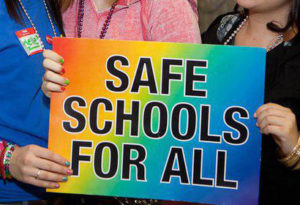Including Prevention in K-12 Sexual Misconduct Policies
Following the guidance released in September by the White House Task Force to Protect Students from Sexual Assault around developing sexual misconduct policies for school districts, the National Sexual Violence Resource Center (NSVRC) has re leased considerations on how to include prevention in K-12 school sexual misconduct policies.
leased considerations on how to include prevention in K-12 school sexual misconduct policies.
A comprehensive sexual misconduct policy must go beyond intervention to incorporate prevention. The guidance released in September included a recommendation to include prevention and education programming in school districts. The talking points developed by NSVRC provide an important opportunity for local programs to build on the White House guidance and engage in discussions about prevention with local school districts.
NSVRC’s suggestions on how to include prevention in sexual misconduct policy development include:
- Measuring the school climate
- Changing social norms
- Partnering with local rape crisis centers
- Providing age-appropriate education on healthy sexuality, consent, and social and relationship boundaries
- Educating staff, administrators, parents and community youth-serving organizations on their role in preventing sexual violence
- Evaluate policies for effectiveness
- Create trauma-informed environments
Responding to sexual misconduct when it occurs is absolutely necessary. To build safe and healthy schools for all students, it is imperative that policies include efforts to prevent sexual misconduct from happening in the first place.
